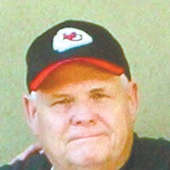What come’s after the end
On Sunday, June 7, the television network ESPN, aired the final episode of “The Sports Reporters,” after a nearly 30-year run. I am sure that the network has some valid researched reasons for this action but for me it is just one more “straw that broke the camels back,” in the seemingly ongoing movement to diminish the traditions of free press, journalism and perhaps most importantly journalists themselves.
If you were not familiar with the show or its style, here are some insights. In the early days the first host was the legendary sports reporter Dick Schaap. After his passing, the late John Saunders led the group for many years until his sudden death in 2016. In the past few months one of the shows regulars, Mike Lupica of the “Daily News,” was the final host.
The show aired each Sunday morning. The host welcomed three other newspaper or television sports reporters to discuss the current sports stories in the news.
The three reporters who were most often on this panel included Bob Ryan of the Boston Globe, Mitch Albom of the Detroit Free Press and William C. Rhoden of the New York Times. All of these men were veteran sports reporters.
When I use the term sports reporters, I actually should use a term that I am sure they would all appreciate, “sports journalists.” These were reporters who had spent years perfecting their writing craft and they had also labored many hours covering sporting events and athletes all over the world.
When they gave an opinion or insight about a recent sporting event or athlete, they came prepared, as any good journalist should. They brought facts, figures and actual interview reports to emphasize their premises.
I was shocked when I heard a few weeks back that the show was coming to an end. For me it was the most intelligent sports reporting venue on television but in this modern day world of the Internet, blogging and live streaming, the end was likely inevitable. To me, an amateur journalist and writer, this is a particularly sad demise.
The axe did not just fall on “The Sports Reporters.” ESPN fired many of their regular cast and reporters and there are likely to be many more to follow. The real issue is, as always, money.
Senior citizen viewers like me are gradually becoming the minority when it comes to the mathematical subscription figures. Most of the people in my age bracket still get both their regular and sports news from television and newspapers. Both of these venues are sadly the dinosaurs of this industry.
This trend is even going to affect just about every type of television that I, and many other fellow seniors, love to watch. All of the networks rely on advertising dollars. As the number of viewers who watch regular television decline so too will the money to fund those shows.
The generations 40 and under, do not watch television the way we baby boomers have done over the past six decades. They do not read or subscribe to newspapers as our parents did and many of us still do. This is born out locally. Our Daily Mail has seen a decline in subscriptions for several years.
The replacements for television, radio and newspaper coverage of both news and sports, is now offered in vastly new venues. For me many of these new venues, while efficient and easily obtained, don’t offer the same reliable content, as that of our tried and true methods. The traditional journalists in newspapers, television and radio fields, have for years followed set guidelines that offer the public authenticity, truth, and vetting.
Perhaps nothing has been more important in this traditional process, than the role of the ‘Editor.’ Reporters in both news and sports have always been guided, and had their work vetted, before it is offered to the public. Each reporter has a responsibility to research and verify the facts upon which they offer their opinions or stories.
To ensure that the public received valid and authentic sports journalism, these old fashioned reporters actually went to the games, interviewed the contestants, and took pictures. After the games, they sat for hours in pressrooms interviewing the participants.
I have noticed the change in how people follow sports locally. I still go to as many sporting events as I can attend and I also read the newspaper, listen to the local radio reports and watch the coverage that are offered on regional television stations.
Many of the parents of the current local athletes don’t make use of these local formats. Their generation, for example, just doesn’t see the need to have a subscription to the Daily Mail but they really like it when someone posts a copy from the sports section of our paper on a venue like “Facebook.”
Well kids, here is the fly in the ointment of that thought process. If you don’t support the local newspaper and radio station, there is a day in the not too distant future when these reliable sources, like the show “The Sports Reporters,” will no longer be available.
When that happens, I ask you the simple question, “What comes after the end?” The legendary country singer George Jones had a hit record about his perceived idea that old country music was being lost titled, “Who’s gonna fill their shoes?” I ask this younger generation the same question about news and sports reporting?
Currently both of our local venues of radio and newspaper still provide this traditional news coverage. The paper, for example, has a full time and talented sports reporter who still goes to the games.
Who do you think will spend the time, and have the skills not only to cover these events, but also the skills to actually write the “King’s English” about them? You many not believe it but I suspect you won’t like what comes after the end!

